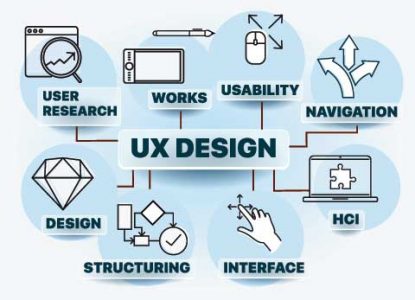The User Experience aspect of applications is often on my mind. I am not a designer, but even the most simple solutions can be rendered unusable when one ignores UX. A recent experience with a front-end to a web app. Reminded me of how bad it can be for a user. My frustration ran high, and I would have walked away never to view the application again if I had the chance. Likewise, I will complain to anyone who will listen about the experience and may sour others on it. That is the last thing anyone wants for any application.
The Intro – How I Got There
Allow me to set the stage for this little drama. I recently took a certification exam from the comfort of my home. It has its annoyances but does save me a drive back and forth to a testing center. There is a validation step to prep and ensure your environment meets the requirements as well as checks to avoid cheating. Once you are validated, a proctor connects via text, does a few last-minute checks, and then your machine is sent the test.
Overall, this is a good system, I think, and probably does a good job stopping people from cheating. This solution is a good one in this case. However, the experience I had leads me to think I will never try that again.
A Bad User Experience
The steps before the exam are where I had all my frustration. The exam process and experience was exactly what I expected. We will start with the preparation step. When you start into the prep process, you are given a nine-digit id to link uploads to the system. You are sent a link on your phone, so you can take pictures and send them to the site. The photos include the front and back of your picture ID (driver’s license) and then four to cover the front, back, left, and right view of your work area. So far, so good.
The upload process tells you what picture to take, flips to your camera app, then you click a button to submit. The user experience gets bad quickly at this point. There is no explanation about the pictures other than what I listed above. I have no idea if you have to take a specific layout or from a certain distance. It gets worse. If there is a problem with the photo upload, you are taken back to the screen to enter the nine-digit ID and forced to walk through the screens again. There is no error message or indication of what went wrong. It does save pictures previously loaded, so at least once you get a successful upload, you do not have to re-enter that picture.
A Painful Design
The preparation process I listed above gets repeated precisely the same way when you log in to take a test. You have to send an ID again and all of the pictures of the environment. A bad UX is doubled down on. This becomes more frustrating when the proctor has access to your machine camera and will likely ask you to pan it around your work area. Thus, confirming a third time that you have a valid environment (no notes on the desk or anything like that).
The same message-free process is used again, so in my case, I spent around forty-five minutes retaking those twelve pictures. I lost count of how many times I took each, but I think I attempted each one at least three times. It is more frustrating because it was not an Internet connection on my end. I had stable and reliable high-speed connections throughout that time.
A Moral To The Story
I mentioned that this solution as a whole is awesome. It is also one that was critically needed in a time of social distancing and stay-at-home orders. It allowed me to get a certification test done much sooner than I would have otherwise. I appreciate that. However, a user experience that has a user in limbo for over a half-hour is far from good. I think all of us would be happy to walk away from that experience.
In this case, that validation process was a small part of the overall solution. You may have seen features like this that are a registration, login, or even close account solution. These are small parts of the overall solution and often seen as not integral to it. For example, I often work on MVP solutions that ignore some of these “minor” features and even downplay the overall UX. That is a
dangerous approach to take. Consider how much damage this bad experience for me will translate into bad feedback spread to others. That should make you think twice before lowering the priority of the UX for your solution.

Leave a Reply
You must be logged in to post a comment.